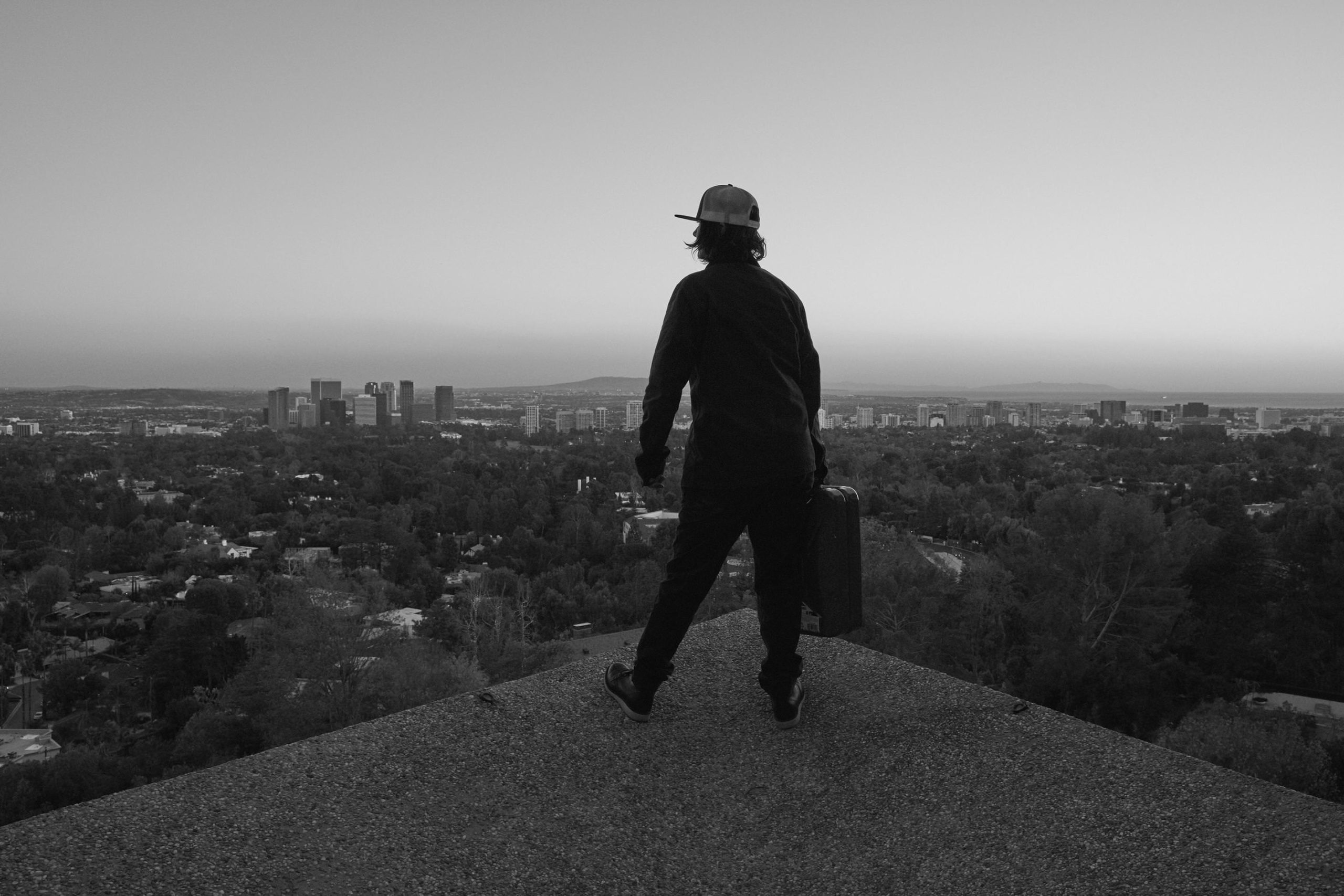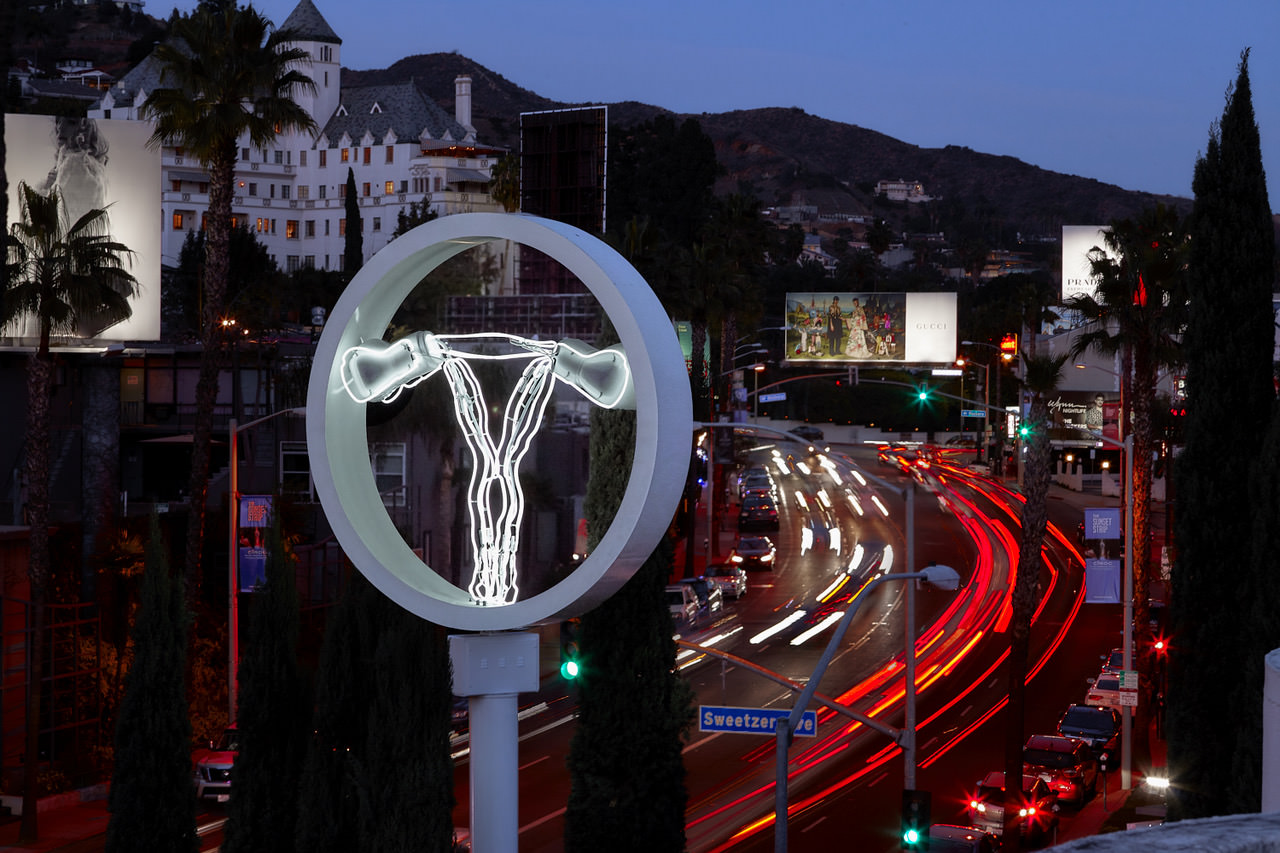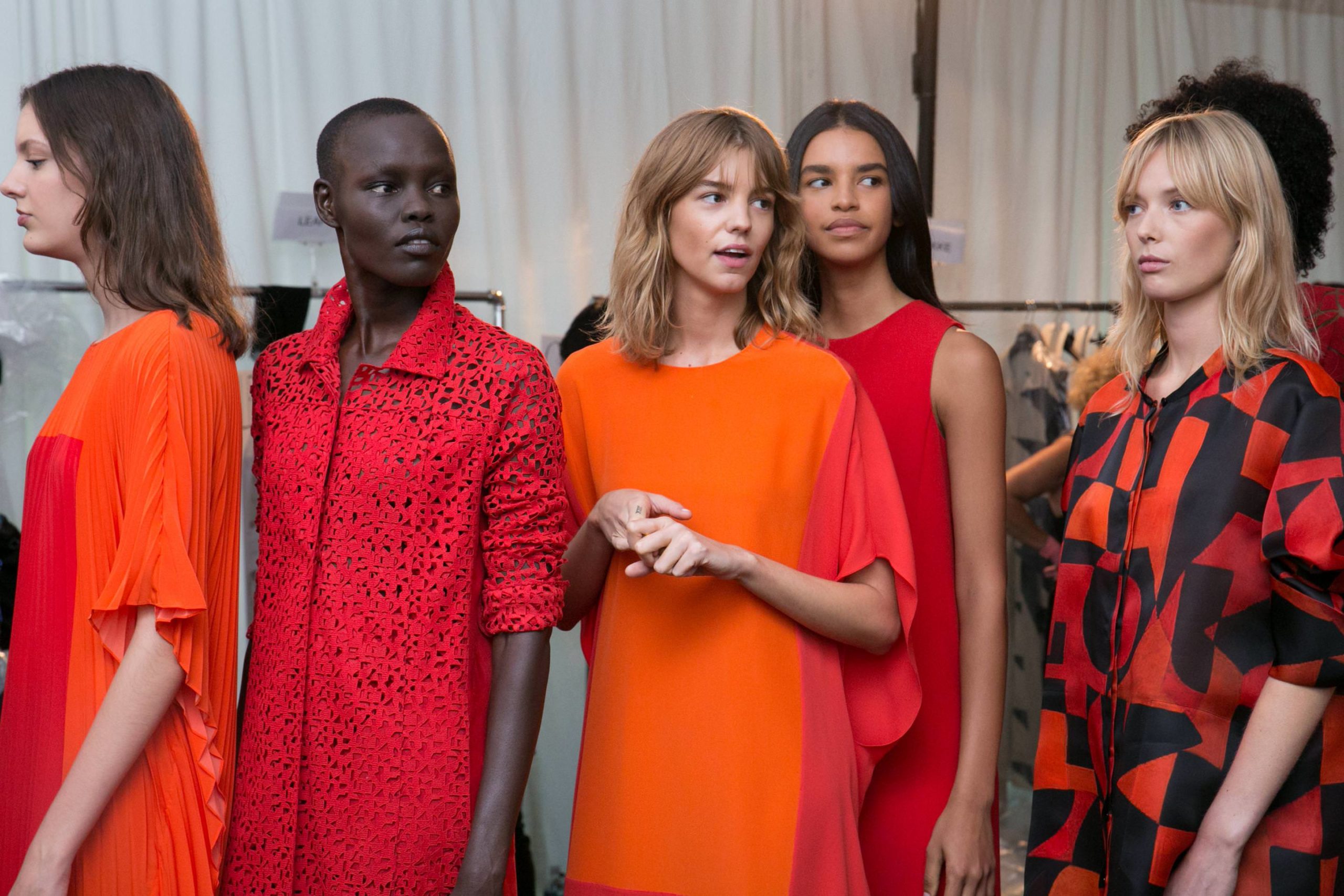This summer, the Whitney welcomes back Scrim veil—Black rectangle—Natural light, Whitney Museum of American Art, New York by Robert Irwin. First designed for the museums fourth floor in 1977, this is the first presentation of the work since its initial installation more than 35 years ago.
The installation is comprised of just three materials, a semi-translucent white scrim, a black bar, and the fourth floor of the Whitney. The scrim, weighted by the black bar is suspended from the ceiling, bisecting the entire gallery, while a thin black line painted on the gallery walls delineates the perimeter. The only light source is a large window, which changes based on the time of day and the weather.
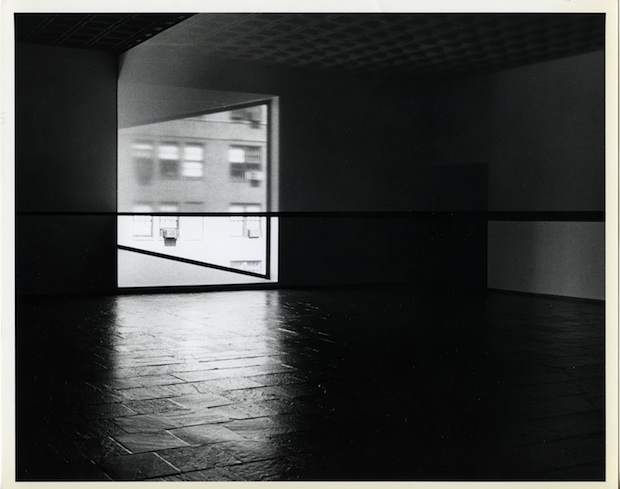
Overall: 144 x 1368 x 49 in
Together the veil, black lines, and diffused light manipulate viewer’s perceptions of the room, like that of an optical illusion
“Looking at and seeing all of those things that have been going on all along but previously have been too incidental or meaningless to really enter into our visual structure, our picture of the world,” said Irwin.
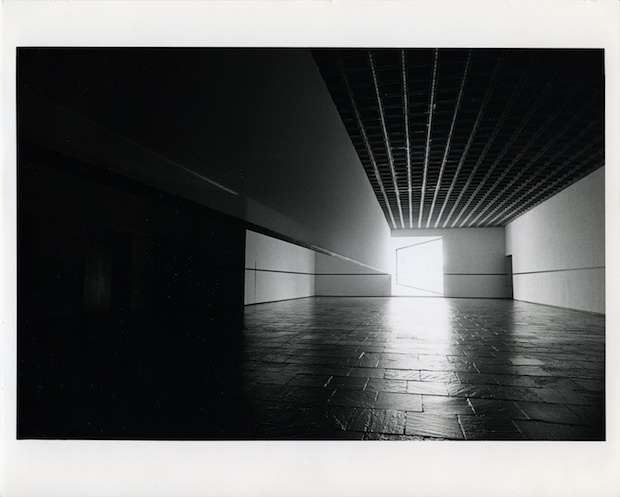
A native of Long Beach, California, Robert Irwin studied at the Otis Art Institute (now the Otis College of Art and Design) and the Chouinard Art Institute, which was later incorporated to form the California Institute of the Arts. In 1958, along with Billy Al Bengston, Craig Kauffman, and Edward Kienholz, among others, Irwin was invited to join the Ferus Gallery, founded by legendary curator Walter Hopps. At the time, Irwin was creating large, gestural Abstract Expressionist paintings, but soon after he began to experiment with more Minimalist works, consisting of geometric forms. Merging his artistic process with his interests in science, philosophy, and religion, Irwin developed a theory that art ought to be conditional to its environment. These ideas led him to abandon the framed canvas and instead make-work in direct response to given surroundings. Light and sensory experience became central to his practice; he is recognized as one of the artists at the forefront of the Light and Space movement, based in Southern California. Since the 1970s, Irwin has continued to make what he calls site-conditioned works, including the design of the grounds at Dia: Beacon Center for the Arts and the central gardens at the Getty Center in Los Angeles. In 1984 he was the first visual artist to be awarded a MacArthur “Genius” Grant.




